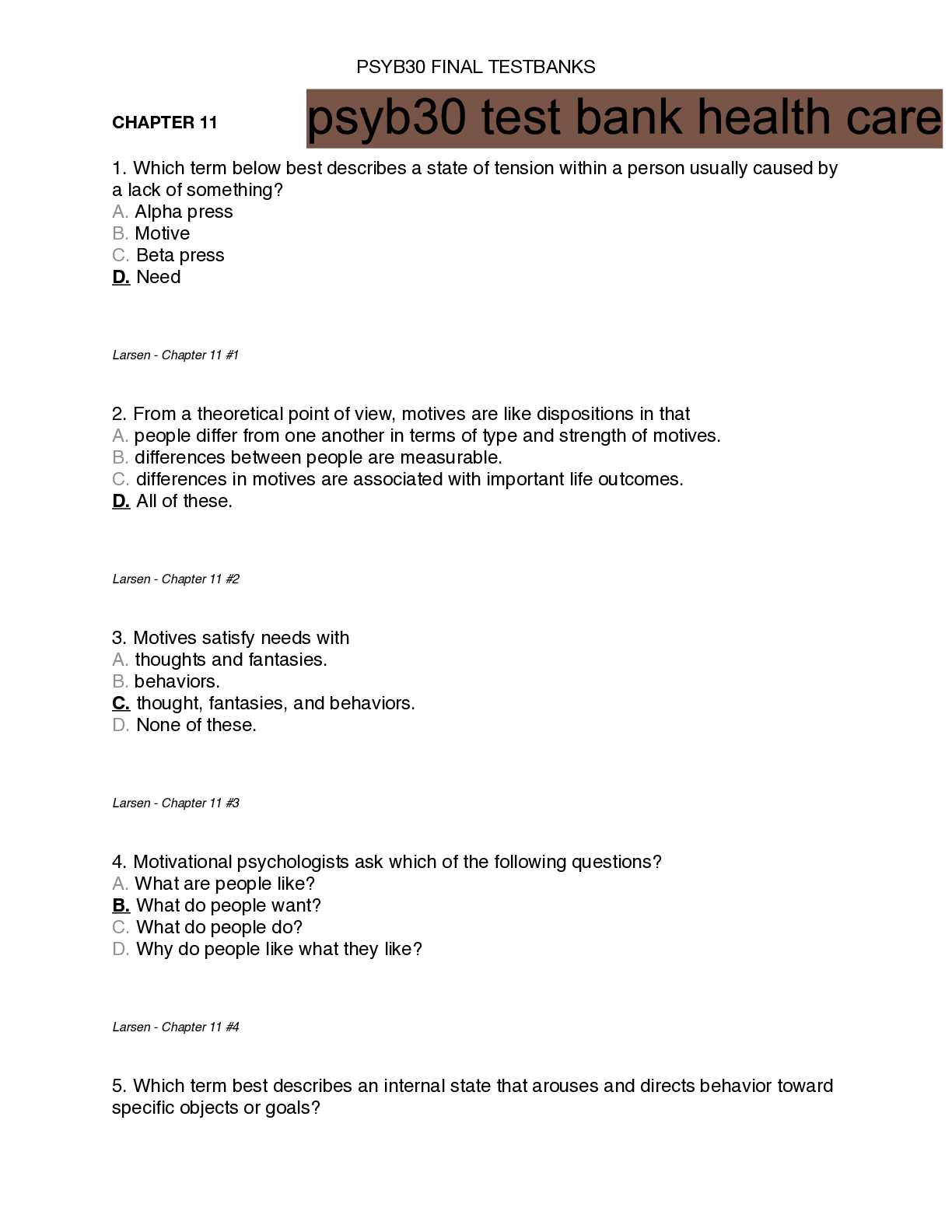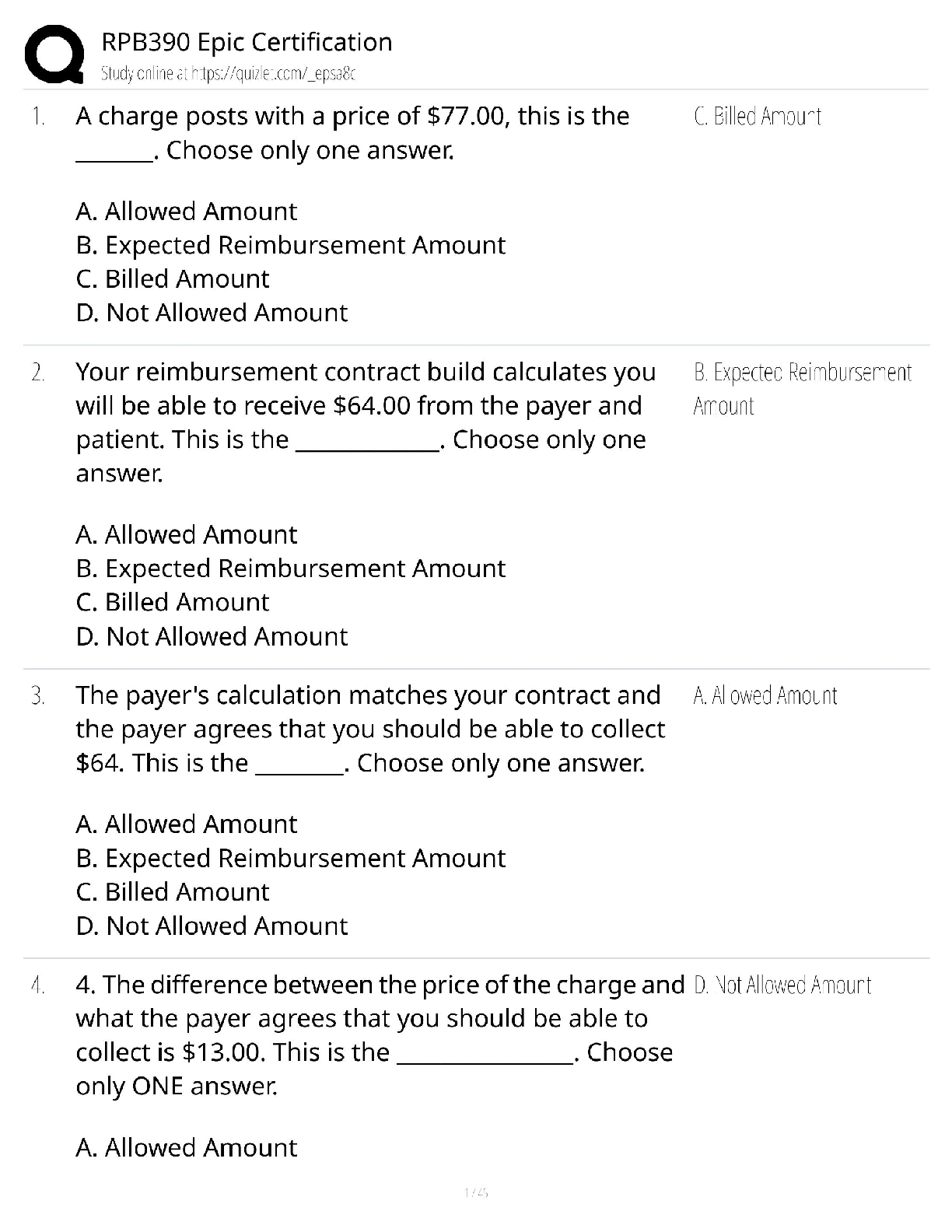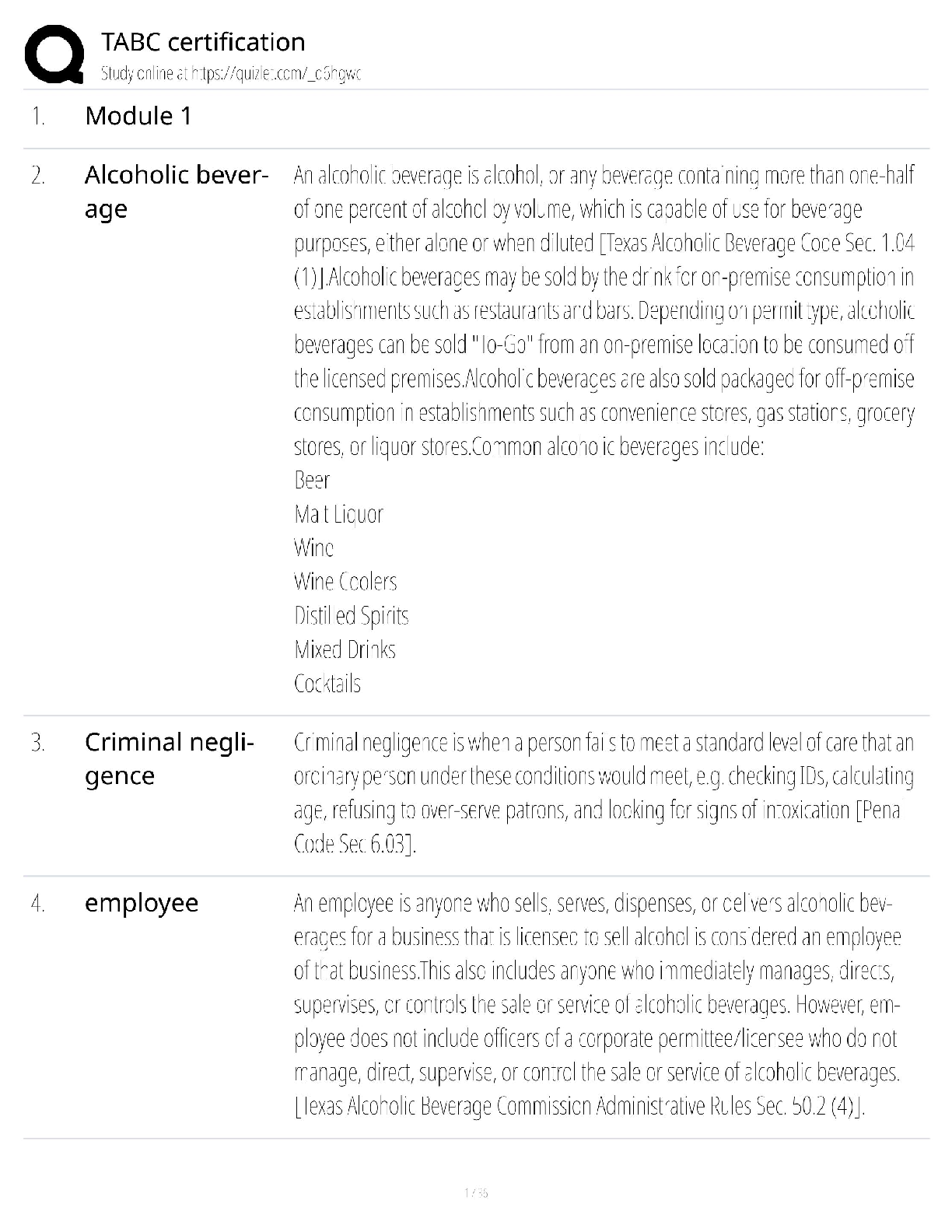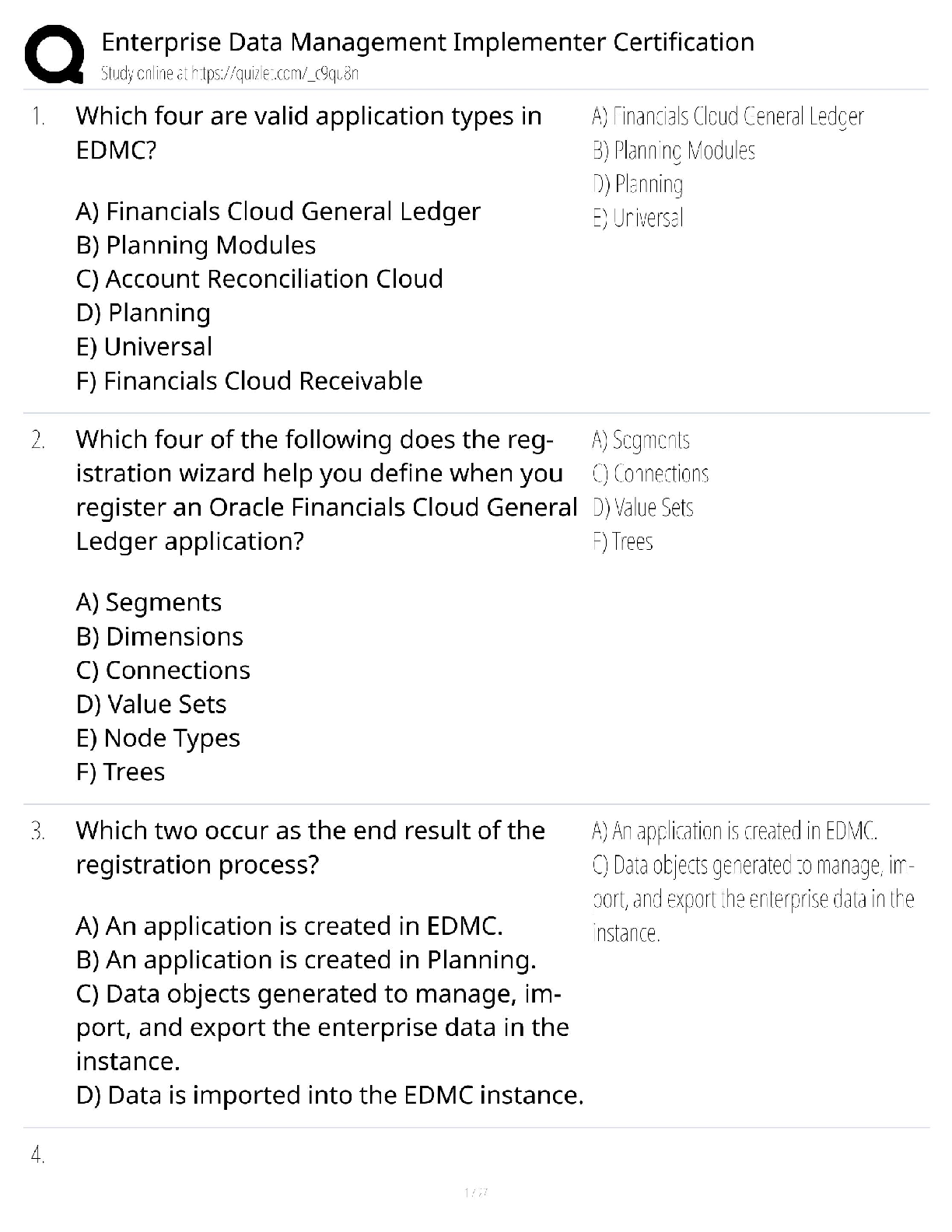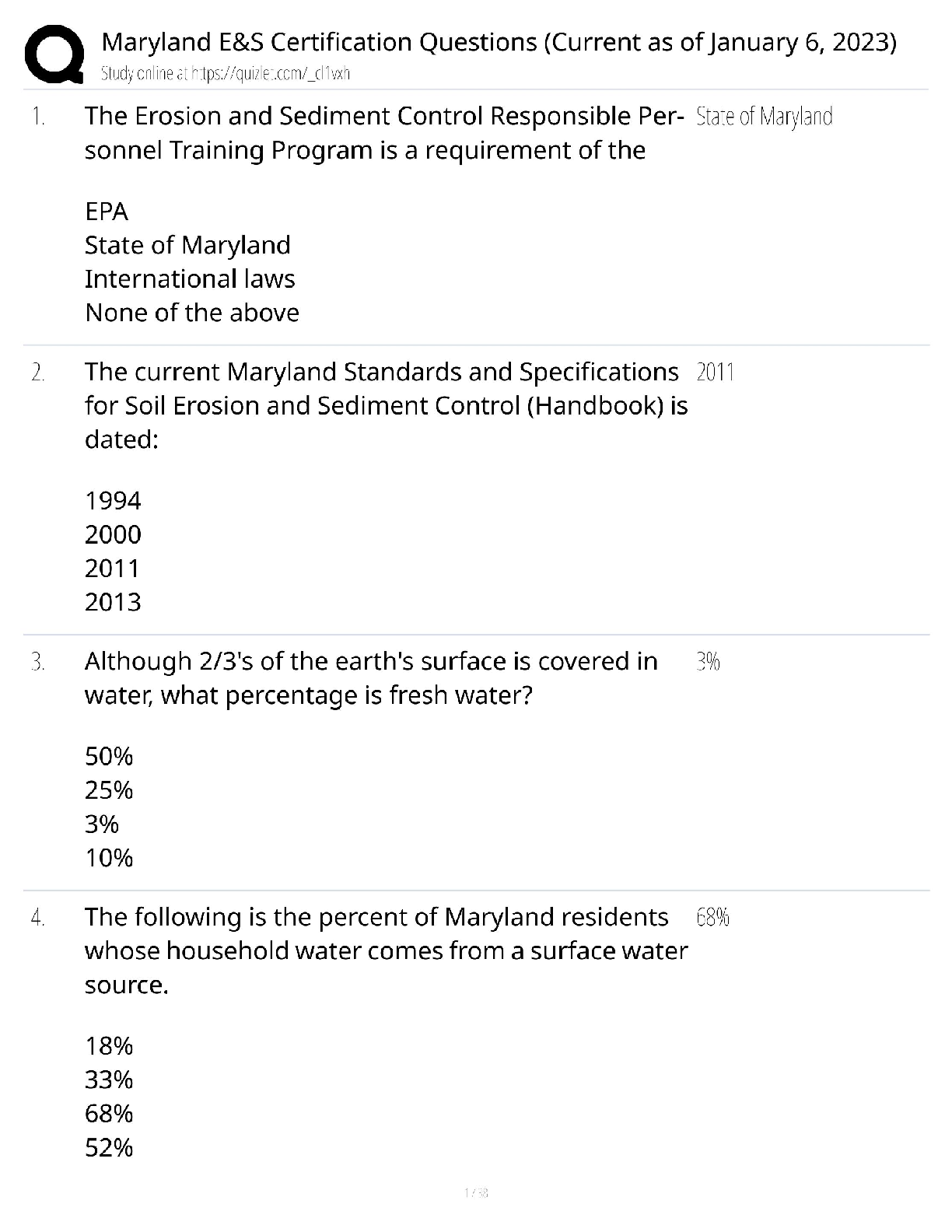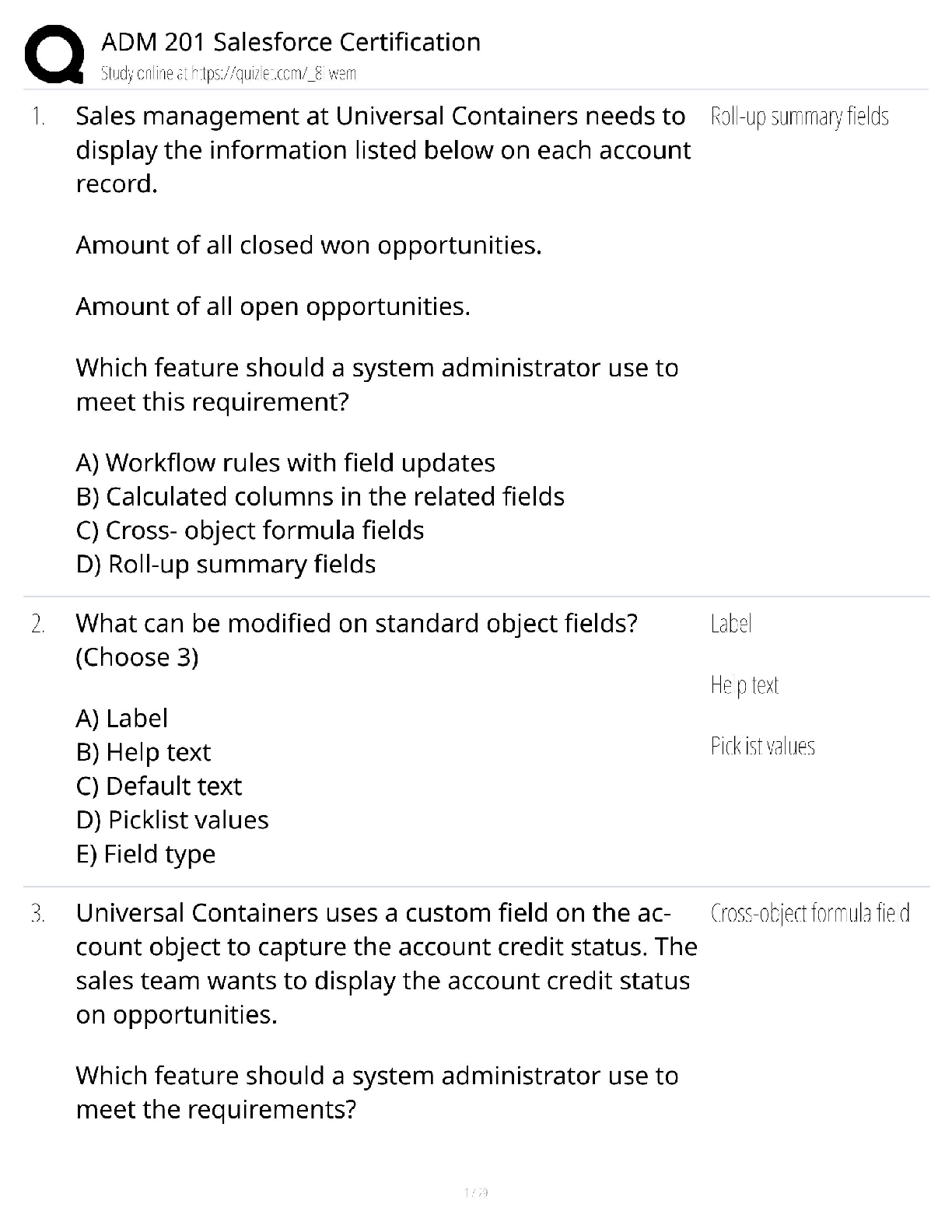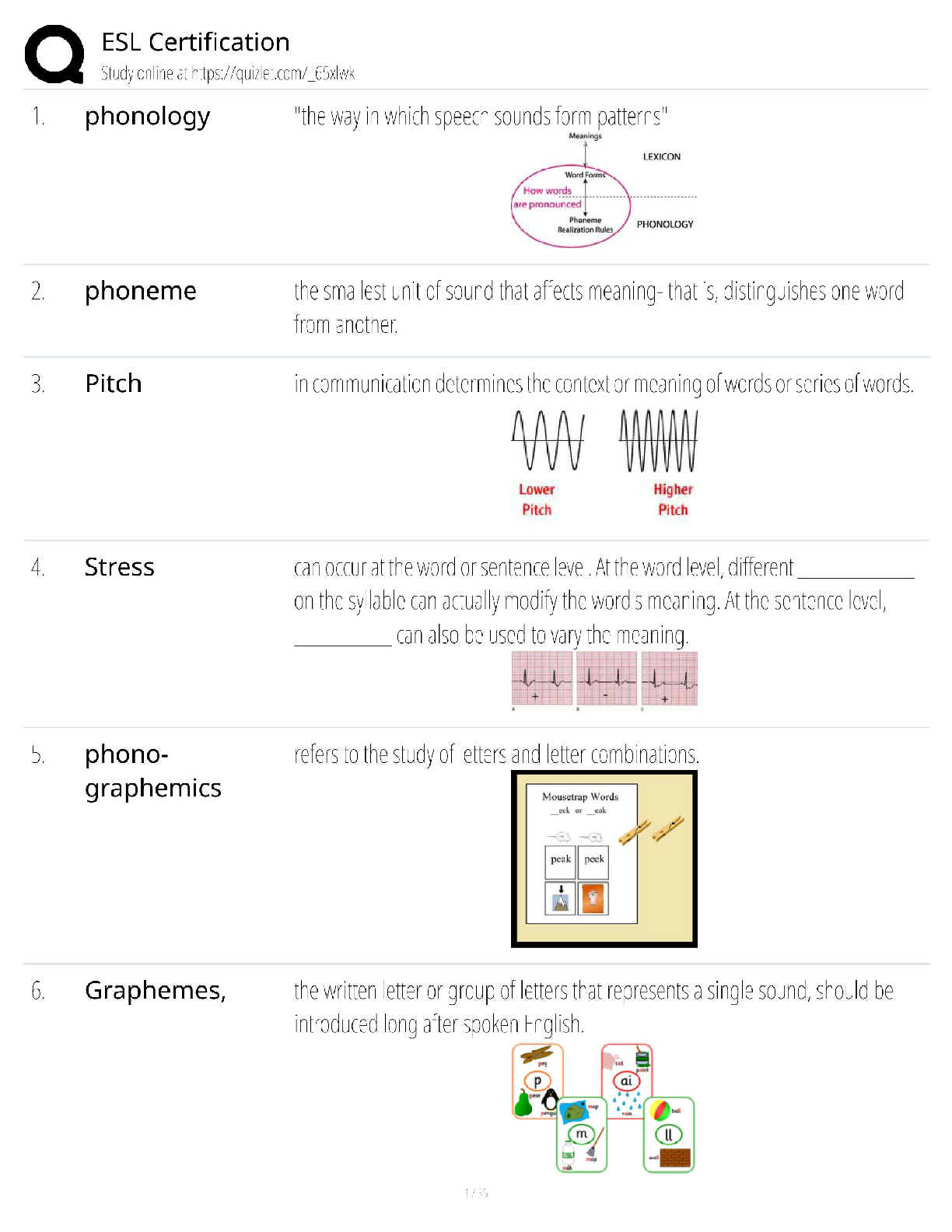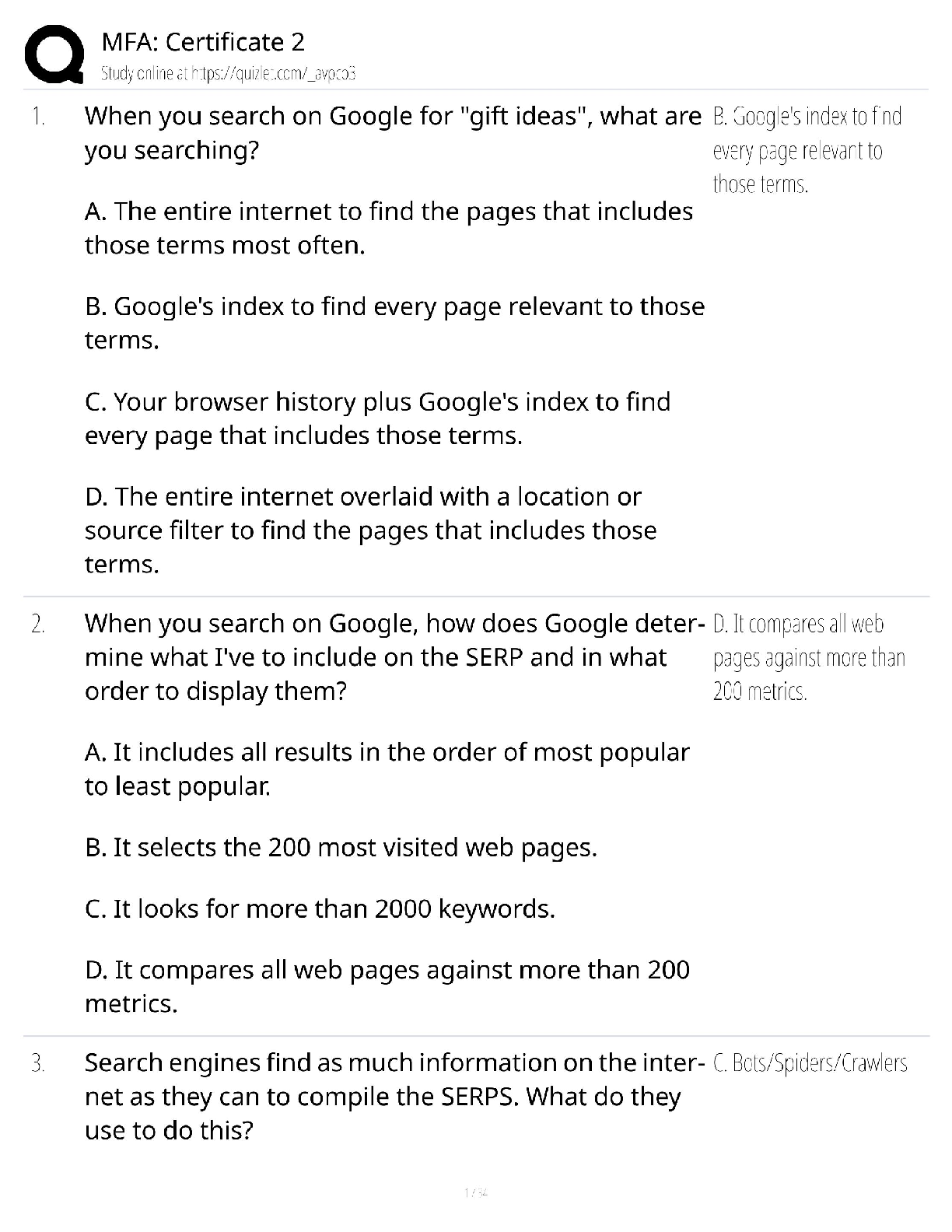Economics > QUESTIONS & ANSWERS > Pearson Edexcel GCE A Level in Economics A (9EC0) Paper 03 Microeconomics and Macroeconomics (All)
Pearson Edexcel GCE A Level in Economics A (9EC0) Paper 03 Microeconomics and Macroeconomics
Document Content and Description Below
All candidates must receive the same treatment. Examiners must mark the last candidate in exactly the same way as they mark the first. • Mark schemes should be applied positively. Candidates must ... be rewarded for what they have shown they can do rather than be penalised for omissions. • Examiners should mark according to the mark scheme – not according to their perception of where the grade boundaries may lie. • All the marks on the mark scheme are designed to be awarded. Examiners should always award full marks if deserved, i.e. if the answer matches the mark scheme. Examiners should also be prepared to award zero marks if the candidate’s response is not worthy of credit according to the mark scheme. • Where some judgement is required, mark schemes will provide the principles by which marks will be awarded and exemplification/indicative content will not be exhaustive. • When examiners are in doubt regarding the application of the mark scheme to a candidate’s response, a senior examiner must be consulted before a mark is given. • Crossed-out work should be marked unless the candidate has replaced it with an alternative response. Question Number Answer Mark 1(a) Knowledge 2, Application 2, Analysis 1 NB an answer which sees highly concentrated as having a large number of firms will not earn knowledge or analysis marks Knowledge and analysis: 3 marks for e.g. • Identification of high concentration - high market share of some firms (1) few large firms dominate (1) uncompetitive (1) • Identification of market structure - there is a legal monopoly (Walkers) OR oligopoly OR duopoly (1) • Firms can set prices (1) control output (1) / monopoly power (1) • Interdependent (1) • High barriers to entry/exit (1) low contestability (1) Application: 2 marks for data references e.g. • Walkers have over 50% of market share (1) • Use of concentration ratio e.g. 2 firm CR 78.0% (2), 3 firm CR 82.2% (2) • Extract A refers to ban making market more competitive (1) implying prices are currently uncompetitive/high (1) • Extract A – high levels of advertising (1) • common features: they tend to be dominated by a small number of firms that sell multiple brands and that heavily advertise their products (1) NB Concentration ratio calculation can be awarded as analysis or application Award a maximum of 1 application mark if there is no reference to Figure 1 or Extract A (5) Question Number Answer Mark 1(b) Knowledge 2, Application 2, Analysis 2, Evaluation 2 Knowledge/ implicit understanding: (1+1) marks for reason e.g. • Educational/skills/wage differences • Changing patterns of trade/globalisation • Government policy/austerity/universal credit • Income generated from inheritance • Payments generated from debt • Race, gender, age, geographical issues • Changes in direct tax • Stage of the economic cycle/Financial Crisis 2008 • House prices (must relate to income not wealth) • Weakened power of trade unions • Level of unemployment/underemployment • Irrational behaviour/information gaps/myopia Application (1+1 or 2): • Any valid application to causing inequality in the UK or other developed country, e.g. unaffordable house prices in the UK mean the younger generation has little income after rent (1); cut in the top rate of income tax, rise in NICs, change in tax thresholds; university fees at £9250 a year is widening the income gap if fewer low income households go to university (1); pensions rising below average incomes (1); educational differences such as an economics degree has a higher impact on future earnings than other degrees (1) Analysis (1+1): • Linked development of the two points made Evaluation (1+1 or 2). Points might include discussion of: • The role of transfer payments/minimum wages in narrowing/failing to narrow inequality • Changes rather than levels of income inequality, absolute vs relative issues • Relationship with wealth e.g. as a more significant inequality issue • Relative significance of different factors e.g. direct taxes more proportional than indirect taxes (regressive) • Time lags e.g. education has effects as yet unfolded, government policy might change, Brexit has not yet happened. NB Do not allow indirect taxes or subsidies as KAA NB Use of Gini coefficient or Lorenz curves could be used as application or analysis (8) [Show More]
Last updated: 3 years ago
Preview 1 out of 28 pages

Buy this document to get the full access instantly
Instant Download Access after purchase
Buy NowInstant download
We Accept:

Reviews( 0 )
$8.50
Can't find what you want? Try our AI powered Search
Document information
Connected school, study & course
About the document
Uploaded On
Sep 12, 2021
Number of pages
28
Written in
All
Additional information
This document has been written for:
Uploaded
Sep 12, 2021
Downloads
0
Views
83

